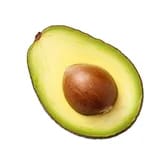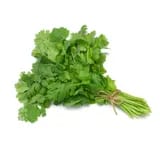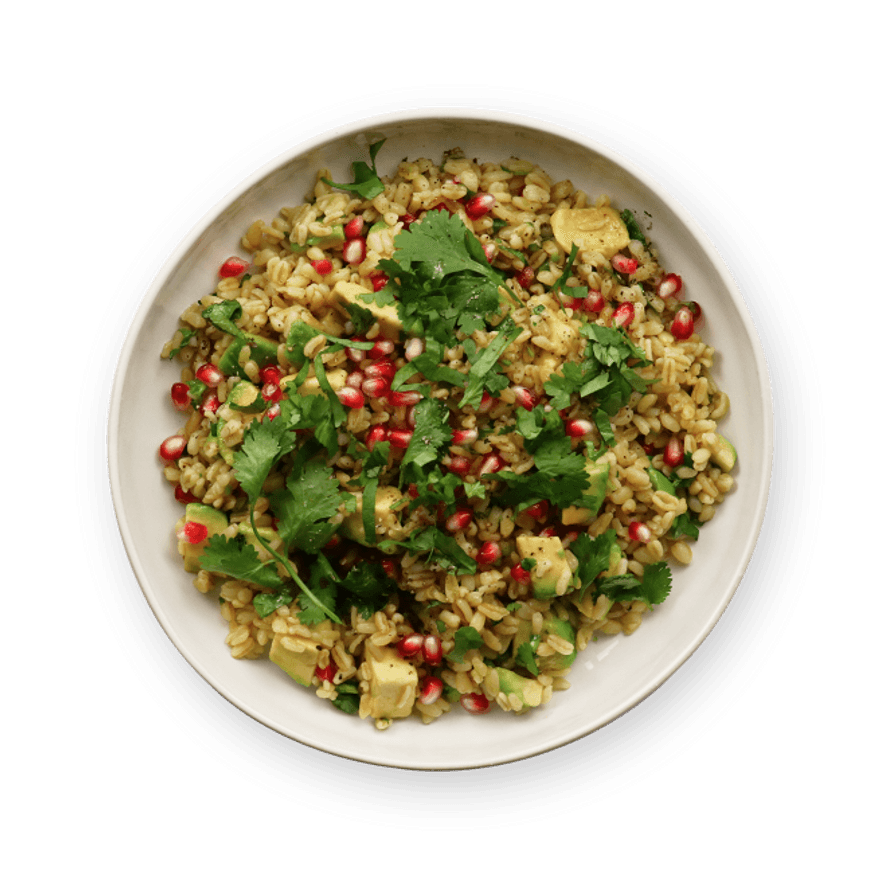Wheat Berry Salad with Avocado & Pomegranate
98 reviewsA delicious way to fill up on your antioxidants!

Ingredients
Utensils
Stovetop, Pot (small), Colander, Grater
recipe

Step 1
Cook the wheat berries according to package instructions.

Step 2
Meanwhile, cut off the top of the pomegranate.
Step 3
Score the pomegranate with a knife and pull apart into quarters.
Step 4
Tip: To avoid turning your kitchen into a crime scene, seed the pomegranate in a bowl of water.
Step 5
Once all the seeds are free, discard the peel and bits of skin, then drain.
Step 6
When the wheat berries are done, drain them and rinse them under cold water.






Step 7
In a large mixing bowl, add the wheat berries, avocado, pomegranate, chopped cilantro, sesame oil, soy sauce, salt and pepper.
Step 8
Optional: Add a bit of grated or ground ginger.
Step 9
Mix and serve!
Personal notes
Add your own flavor!
Nutrition facts
Average estimated amount for one serving
| Energy | 606 cal. |
| Fat | 40 g |
| Carbohydrates | 46 g |
| Protein | 10 g |
| Fiber | 11 g |
Values are based on an average estimate for one serving. All nutrition information presented on Jow is intended for informational purposes only. If you have any concerns or questions about your health, please consult with a health-care professional.
On average, one serving of the recipe "Wheat Berry Salad with Avocado & Pomegranate" contains 606 Energy, 40 g of Fat, 46 g of Carbohydrates, 10 g of Protein, 11 g of Fiber.
Price per portion
| € | Nos recettes à -2 € par portion |
| €€ | Nos recettes entre 2 € et 4 € par portion |
| €€€ | Nos recettes à +4 € par portion |
Please note, the price above is dependent on your grocer and the available products in the grocery store you chose.
Scores


C Nutri-score
The Nutri-score is an indicator intended for understanding nutritional information. Recipes or products are classified from A to E according to their food composition to promote (fiber, proteins, fruits, vegetables, legumes, etc.) and foods to limit (energy, saturated fatty acids, sugars, salt, etc.).
A+ Green-score
The Green-score is an indicator representing the environmental impact of food products. The recipes or products are classified from A+ to F. It takes into account several factors on the pollution of air, water, oceans, soil, as well as the impacts on the biosphere. These impacts are studied throughout the product life cycle.
Retrieving reviews...


